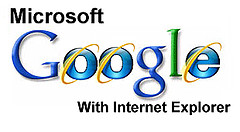We like non-profits and socially responsible organizations here at Other Side Group. Being a non-profit, community involvement is especially important, and it seems a natural progression that non-profits would become more involved in social media outlets.
We’ve highlighted five non-profit organizations that are not only involved in but effectively using social media:
1. The American Red Cross has an established presence on both Facebook and Twitter. With over 70,000 fans on Facebook and 18,000 followers on Twitter, they not only have successfully reached members of the community, but they are doing several things right: When directing traffic to their Facebook page, all visitors land on the photos tab. This may seem like a minute detail, but so much of the support for the Red Cross comes from community involvement. Without fail, any page visitor will see, even briefly, the photos taken of real-life volunteers from blood drives, disaster relief efforts and other community events. The Red Cross Facebook page has even set up the Causes application to accept online donations directly from their Facebook page. They also are communicating with their followers well on Twitter. Being such a large organization, it would be incredibly difficult to track down all the tweets regarding the Red Cross, but they do a good job of individual retweets. Also, to support community involvement, they post relevant tweets to their blog feed with a short personalized message: Red Cross Blog.
2. Babson College is also on both Facebook and Twitter, and managing the two quite well. Their Facebook content is dynamic enough that fans are consistently interacting with it by posting comments etc. Additionally, they have content fed into Facebook from many sources: the blog, manually, notes, fans, etc. As for Twitter, while they could be posting more frequently, they are responding to people directly and creating conversation. They’ve even set up a blog for students to share their summer internship stories with the community (All fed into Facebook of course).
3. Share Our Strength interacts on their Twitter with members of the community and other organizations with a similar agenda. They tweet very frequently, (even on the weekends!) which is the best way to stay involved and current.
4. The Livestrong Foundation has a very interactive Twitter account. They create a close community by responding to individual tweets, and interactions are based a lot on personal experiences, support and sharing. Because they have created such a strong community foundation on Twitter, it is a good way to spread information about events and fundraisers.
5. The National Wildlife Federation is also active on Twitter. They have the NWF main account, and other accounts for their other campaigns, such as Green Hour, which gives tips about being active outside. This allows them to reach different niches with appropriate information.
There are many ways non-profit organizations can use social media to their advantage: fundraising, recruiting, spreading their message, etc. Depending on each organization’s needs and goals, social media interactions can be different for everyone, but the above organizations are definitely using these outlets effectively to their benefit.
Interested in seeing what social media can do for a non-profit you’re involved in? We’re having a contest, and the winning non-profit organization gets a free social media report!
Related articles by Zemanta
- 26 Charities and Non-Profits That Tweet (mashable.com)
- 4 Ways Social Media is Changing the Non-Profit World (mashable.com)
- SXSW: Social Media Nonprofit ROI Poetry Slam - Slides, Links, and Poems (long) (beth.typepad.com)




